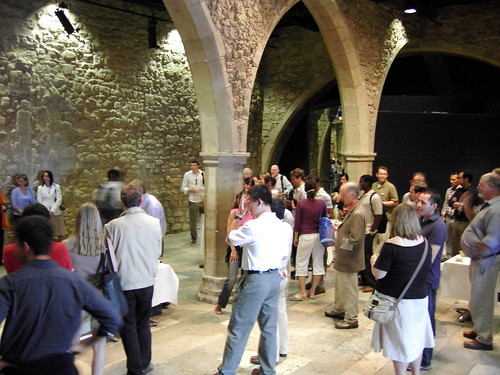Bonnie's critique of Play between Worlds
Taylor points out that while women and men both enjoy the social aspects of role playing games, it’s not just chat women are after. As she says, calling out chat as the main driver trivializes the activities of competing, playing, and socializing which go far beyond chat. In my preliminary interviews on gender and WoW, the word competition comes up as something that appeals to women who play.
I think that was a great point, and I wholeheartedly agree.
Taylor writes quite a bit about the hypersexualized images of women in games. I am not an expert here but my sense is that World of Warcraft has toned this down somewhat, although representations of females with Barbie Doll proportions seem to be a permanent part of the culture in games and everywhere else. My darker question is whether women care about this.
I would say, from my own experience as a WoW player "Yes." I do think that our choices in the female avatar 'looks' are quite limited, as are the skin colours/features/ and much more than just sexual stereotypes. I found I either had to play a hyper feminized night elf if I wanted to be 'pretty' or if I wanted to be strong and not as sexualized, I would play a Tauren.. with boobs. It is actually a common stereotype in the game that Tauren females are often the 'real' females (as opposed to guys who are just saying they are female) because they are the least sexualized Horde characters.
There’s tons of references to pop culture, most of which I’m sure I’m missing, but, for example, Jethro Tull’s Bungle in the Jungle. The game takes you back to the Middle Ages but it also takes you back to your own cultural experiences. Is this part of the elusive depth of play?
An interesting thing I've mentioned before is that the Night Elf village is... Korean. They have the big Korean-style gates, and Night Elf vendors in Darnassus and Moonglade also sell Kimchi, Mandu, and other such food delights along with clothing like Hanbok (traditional Korean dress). The game also has a rich narrative that is compelling... that does draw upon Tolkien, but more recently even within the WarCraft real-time strategy games 1-3... which lay the foundation for the faction wars between Alliance, Horde, and their internal allies.
Taylor comes pretty close to suggesting that game companies owe their users because of all the player-produced content, as well as free beta testing, and so on which add up to what she calls “labor.” I can’t quite see this. Labor, if that is what it is, is voluntary.
My colleagues and I are wrestling with this very question as well, in a more meta form, which is the line between work and play... and just what it is, and how to define it. I'm involved with a technological analysis tool called TEDA, which stands for Techno-Experiential Design Assessment. It looks at the 'fitting' of a technology in someone's lifeworld... and one of the major categories of the Ethos protocol within TEDA is something called "projects and cultivations" versus another major category of "chores and ordeals." In life, someone may have more of one than another, and seek to fulfill different aspects of this in a job or hobbies. What WoW seems to be, is a compelling combination of these facets... so it is ambiguous to call it either work or play as those are currently (inadequately) defined, worthy of more complex exploration to be sure.
Bonnie's comment also makes me think of fan fiction and the extraordinary labour involved in creating community, narrative, and life associated with something like a soap opera.
Back to constructing more amusement...


